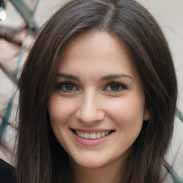Educational Psychology Exam 1 Review – Flashcards
Unlock all answers in this set
Unlock answersquestion
Differentiated Instruction
answer
A good teacher must be able to accommodate a wide variety of learners. One way to do this is to use ____?
question
Teaching students effectively who are on different levels; providing, allowing, permitting, structuring, and creating.
answer
What is differentiated instruction?
question
Focused, Engaged, Demanding, Important, Scaffolded. All independent and interlocking terms.
answer
The acronym for the cogs of differentiated instruction are FEDIS...
question
Intentionally changed by researcher
answer
Independent Variable
question
What is being observed
answer
Dependent Variable
question
Knowledgable, inventive, range of strategies, understanding student development, "sage" and a "guide", read about research
answer
Good teaching = ?
question
Theoretical (ideas), Empirical (research), Practical (experience), and Case (other teachers)
answer
Knowledge crucial for teacher growth = ?
question
Father of progressive education movement
answer
John Dewey
question
Founded American Psychological Association
answer
G. Stanley Hall
question
1st Ed. Psych text (1903)
answer
E.L. Thorndike
question
Talked to teachers about research
answer
William James
question
Describe info. about variables in a population without changing the way events naturally occur (surveys, interviews, observations)
answer
Descriptive studies
question
Intensive study of one person or situation (how a teacher plans a lesson).
answer
Case study
question
Researcher becomes participant, sees their P.O.V.
answer
Participant Observation
question
Often results of descriptive studies, (correlation) a # that indicates the strength and direction of a relationship between 2 events/measurements.
answer
Correlational studies
question
Strong (close to -1.0) and Negative (descending)
answer
Is a correlation of -.78 strong or weak, pos. or neg.?
question
-1.0 or +1.0
answer
A correlation is stronger the closer it is to . . .
question
Used to establish cause-and-effect relationships between variables by random assignment and manipulating a variable(s).
answer
Experimental studies
question
Participants are not assigned to groups at random, uses existing groups such as a class, school, or team. Often times, independent variable cannot be changed. Infer cause-and-effect.
answer
Quasi-experimental
question
Examine two or more groups to compare behaviors.
answer
Cross-sectional (quasi)
question
Observe same person repeatedly to observe changes over a long period of time.
answer
Longitudianal
question
Probably did not happen by chance (p<.05) less than 5/100.
answer
Statistically significant
question
Certain changes that occur in humans throughout life (physical- maturation, personal, social, cognitive).
answer
Development
question
Part of physical development that changes occur naturally- genetically programmed.
answer
Maturation
question
1.) People develop at different rates 2.) Development occurs relatively orderly 3.) Development takes place gradually
answer
What are the 3 principles of development?
question
Children are active builders of their knowledge. Influences include biological maturation, activity social experiences, and equilibration
answer
Piaget's theory on cognitive development
question
1.) Infancy: sensorimotor 2.) Early childhood: pre-operational 3.) Later elementary/middle school: concrete operational 4.) High school/college: Formal operational
answer
Piaget's 4 stages of development
question
Senses- seeing, hearing, moving, touching, tasting, etc. Object permanence, goal-directed actions, mentally represent objects and events (imitation), schemes, adaptation, assimilation, equilibration.
answer
Sensorimotor stage
question
Mental systems or categories of perception and experience, basic building blocks. Can be specific or general.
answer
Schemes (sensorimotor)
question
Use of existing schemes to understand new information
answer
Assimilation (sensorimotor)
question
Change existing schemes to respond to new situations
answer
Accommodation (sensorimotor)
question
Assimiliation
answer
See a raccoon and call it a "kitty"
question
Accommodation
answer
Combining the recognition of a raccoon is the recognition of an animal
question
Operations = actions carried out and reversed mentally, semiotic function = symbols (lang., sings, pics, etc), egocentric = can't see other peoples P.O.V.s
answer
Pre-operational
question
Pre-operational
answer
Child thinks there is more pizza when it is cut into 8 slices instead of 4 big slices
question
"hands-on thinking", laws of conservation, identity, compensation, reversibility, seriation
answer
Concrete operational
question
Some characteristics of objects remain the same despite changes in appearance (ex: pouring 8 oz of milk into a gallon jug- looks like less, but still same amount just bigger space)
answer
Laws of conservation
question
Putting objects into categories
answer
Classification
question
Objects into sequential order based on 1 dimension (weight, size, height)
answer
Seriation
question
Able to solve abstract problems, hypothetico-deductive reasoning, adolescent egocentrism
answer
Formal operation
question
Think about what MIGHT affect a problem, then evaluate a specific situation
answer
Hypothetico-deductive reasoning
question
1.) Learning is a constructive process 2.) Ensure students' active engagement in learning 3.) Determine problems- look for repeated mistakes 4.) Keep disequilibrium (lack of stability/guidance) "just right" to encourage growth
answer
Implications for teaching
question
Underestimating younger children's abilities, inattention to cultural and social influences, development may not occur consistently with stages
answer
Limitations of Piaget's theory
question
Children learn from cultural interactions with people with ore knowledge/experience. Social interaction = origin of higher mental processes
answer
Vygotsky's sociocultural theory
question
Allows younger children to guide behavior and thinking, use of self-directed talk is highest 5-7 and then gradually fades, this self talk becomes internalized (whisper, lip movements, thought)
answer
Vygotsky private speech
question
Believed in social interactions. P = peers because on the same level and V = elders because more knowledgable
answer
Piaget AND Vygotsky both . . .
question
High processes are 1st co-constrcuted (interaction with others to understand), the internalized, use of cultural tools (symbols like language, numbers, etc) helps accomplish higher thoughts. Develop a "cultural tool kit" = language is most important
answer
Vygotsky
question
The gap between actual competence level (child's problem-solving capability when working independently), and potential development level (what the child can do with assistance)
answer
Zone of proximal development (ZPD)
question
Instructor becomes a supportive tool for the student in ZPD
answer
Scaffolding
question
Piaget: Language depends on cognitive development Vygotsky: Language influences cognitive development
answer
Relationship between language and thought
question
(V first, then P) Varies across cultures vs. Universal, Social interactions vs. Independent explorations, Social processes become individual vs. Individual become social, Adults change agents vs. Peers change agents
answer
Cognitive development: Piaget vs. Vygotsky



